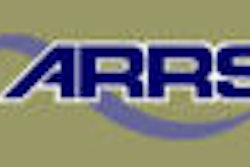
Taking the time needed to develop the proper infrastructure for grassroots lobbying (while not in the heat of an issue) will enable the organization to respond quickly and effectively. In addition, there are related public relations opportunities in each community.
Know your legislators
Developing a mailing list, including e-mail addresses, is the first step in this process. Most legislators maintain Web sites and often provide e-mail newsletters and updates. State and federal legislative search engines enable constituents to identify pending bills, voting records, and final laws. While radiology or medical associations will usually initiate communications regarding important legislation, monitoring those activities is a good internal practice as well.
Senators and representatives also maintain local offices, and will visit periodically when Congress is not in session. This provides an excellent opportunity to arrange for face-to-face meetings regarding pertinent issues, or to invite a legislator to visit a group of constituents, such as a local Radiology Business Management Association (RBMA) chapter, or a state radiological association.
In one instance, when Medicare was announcing drastic cuts in reimbursement, a practice manager approached her senator when he appeared at a local event. She invited him to visit her billing office and explained many single mothers were employed by the practice, which provided them with good jobs and excellent benefits. She further explained the proposed cuts in reimbursement could potentially result in the termination of several of these employees. Although the senator's schedule did not allow for a personal visit at that time, she established an opportunity to further discuss issues with the senator's key staff members, and eventually visited them in Washington, DC.
Legislators understand the critical nature of their relationship with constituents, and will normally respond to questions and concerns -- especially if they are voiced in a professional manner.
Become a spokesperson for radiology
When corresponding about important issues, meeting with legislators, or generating media coverage, it is important to provide the audience with fact sheets and key information. Short bullet points are most effective and can be developed from existing information. The fact sheet not only serves as an educational vehicle, but ensures a higher level of accuracy when information is quoted. It is important to present accurate facts to policymakers and the media to establish credibility.
Suggested fact sheets should include the following:
Profile of your practice: How many facilities are served, number of radiologists and their subspecialty areas, modalities offered, and general information regarding procedure volumes ("more than 100,000 cases per year"). If radiologists or the administrative staff is involved in community events or organizations, this should also be mentioned.
Economic impact: While a single practice can report its economic impact on the community, this is more effective when a group of practices can be represented. For example, noting the number of nonphysician employees, nonphysician payroll and benefits, goods and services purchased in the community, and "good corporate citizen" donations or support will get the attention of legislators. Radiology practices are normally good employers, often paying an above-market wage and offering excellent benefits.
Radiology trends: Bullet points regarding radiology trends can be adopted from industry and association resources and should address the following items:
- Use of radiology modalities to avoid invasive diagnostic options
- Advances in modalities such as vertebroplasty, uterine artery embolization, and the health benefits for patients
- The role of the radiologist, including specialized training and other supporting information explaining what a radiologist does
- The growth of imaging modalities and advances in technology
- Imaging quality -- best when done by a radiology professional
- Other pertinent facts and clarifications
Setting up internal mailing lists
Submitting a single piece of correspondence on letterhead with many signatures is less effective than generating individual letters. We have found it effective to use home addresses for physicians, managers, and supervisors -- and to customize several versions of the same letter.
The initial paragraph can briefly introduce the writer as an employee of the practice and include one or two facts from the fact sheet (number of employees, facilities, etc).
The second paragraph should succinctly define the issue as professionally as possible. Often this language is provided by an association and includes the potential impact of the proposed legislation. If there is apt to be local impact, that should also be noted, but excessive emotion or ranting detracts from the effectiveness of the message and should be avoided.
Finally, the correspondence should define the action requested, whether voting for or against the proposed legislation.
Telephone calls and e-mail submissions will also help establish the scope of concern regarding the issue; and when done effectively, decision-makers can be flooded with several hundred thousand communications within a short period of time. The more the issue can be supported in terms of its impact on patient care, access to procedures, or the cost of healthcare, the stronger the message to the legislator will resound.
Involving the community
Mobilizing support from other healthcare providers, as well as members of the community, can also make a difference. For example, several years ago a radiology practice marketing director was asked to help support state legislation that would require insurance coverage of mammography. While mounting an effective campaign could normally take six months or more, the challenge was to at least gain the attention of the public within a six week-period beginning three weeks before the legislative session. The radiologist requesting this support strongly felt the insurance lobby would again successfully oppose the legislation, but was determined to raise the coverage issue with the goal of getting the law passed in the following year.
The marketing department prepared a short letter regarding the legislation, including what it would mean in terms of access to mammography procedures, and distributed the letters to ob/gyn and family practice offices in the city. The group's imaging centers were, of course, used as distribution points for the information. Included in the letters were instructions regarding the names and contact information for state legislators -- along with a "make a phone call" request for action.
In addition, fact sheets were provided to local media along with information regarding the growing incidence of breast cancer and the importance of mammography. The radiologists also sent individual letters and called their representatives.
The result? The legislation passed as proposed that year and the marketing team celebrated an unexpected level of success.
Final comments
While it is important to be well-versed on the issues, the impact of one-to-one communication with policymakers cannot be underestimated. Grassroots lobbying is inexpensive and, with minimal up-front organization, can quickly and effectively be launched either locally or nationally.
It is important to clearly focus on the issue at hand -- and simplify complex issues when possible. Using a face-to-face communication with a legislator is not the appropriate forum to dump any and all past grievances and gripes, so a level of professionalism is required. Leaving a business card, fact sheets, and contact information allows for additional clarification, and it is not unusual for a legislator's staff members to follow up on hot issues.
Describing the personal, company, or community impact moves the issue from the theoretical to one that can influence future support for the legislator -- and will therefore gain attention. Anticipate questions that might be asked, especially since the person listening to your presentation is apt to be unfamiliar with the complexity of radiology (or healthcare) issues. Again, the fact sheets can assist in providing accurate, concise information.
As in any sales communication, "ask for the business" and make it clear what you feel should happen in terms of support or opposition for a particular issue. Following the meeting, a written follow-up "thank you for the meeting" communication is appropriate. An additional communication following favorable actions will help ensure the door will remain open for discussing future issues.
The concept behind grassroots lobbying relies on the personal touch and the power of the individual when mobilized. The organization and participation does not have to be laborious and can definitely pay dividends in terms of influencing policy.
By Patricia A. Kroken
AuntMinnie.com contributing writer
October 19, 2006
This article originally appeared in the Radiology Business Management Association's Bulletin in its July/August 2006 issue and is provided for AuntMinnie.com members through the permission of the RBMA. For further information about the association, the RBMA may be contacted at 888-224-7262 or via its Web site.
Patricia Kroken is a principal in Healthcare Resource Providers, an Albuquerque, NM-based radiology business consulting firm. She is a past president of the RBMA, a fellow in the American College of Medical Practice Executives, and a certified radiology administrator. Kroken may be contacted at 505-856-6128 or via her firm's Web site.
Related Reading
Revenue cycle review helps imaging centers face challenges to come, August 25, 2006
Improve what? Finding a process to improve, July 27, 2006
Dealing with HIPAA changes in 2006, April 6, 2006
Centralized scheduling brings efficiency, convenience, June 25, 2004
Marketing plan charts course to success for radiology group, June 5, 2002
Copyright © 2006 RBMA



















